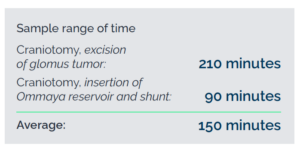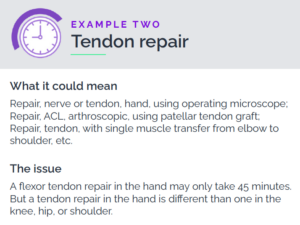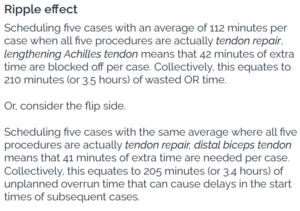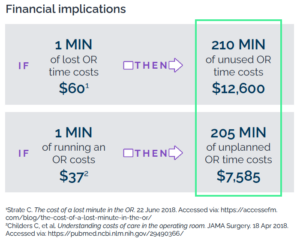Time is money: The impact of case duration inaccuracies on surgical departments
On the surgical floor, there’s usually little tolerance for wasted time. But when cases go longer than planned for medical reasons – like an interoperative complication or an unexpected emergent patient – most clinicians understand.
However, when planned case times are incorrect because of administrative issues — like scheduling errors or inaccuracies — patience can easily wear thin. Furthermore, when assessed collectively, these delays can have significant negative repercussions on a health system’s bottom line.
While it may not be possible to completely avoid scheduling inefficiencies, one tool in particular can make a big difference. Leveraging a robust and granular surgical dictionary can help organizations minimize wasted time on the days when surgeries do go according to plan.
Not your average calculation
From an outside perspective, it might seem like scheduling surgical cases would be fairly straightforward. In order to estimate how long a procedure will take, why can’t schedulers simply look at how long these types of cases have taken in the past, calculate an average, and come up with a relatively accurate approximation?
Well, in short, they can.
To predict case duration for a given operation, electronic health records (EHRs) and specialized surgery platforms search for procedure names or their standardized codes, gather the information relating to case duration for each, and then calculate and suggest the amount of time an OR scheduler should reserve on the block schedule. So why do errors in case estimations persist?
In many cases, it’s due to the fact that a health system’s surgical dictionary isn’t granular and detailed enough. For example, scheduling a hernia repair might be technically accurate – but is it a ventral hernia or a hiatal hernia? Will the case be open, laparoscopic, or robotic? While a ventral hernia repair takes an average of 30- 45 minutes, surgeons need 2-3 hours to repair a hiatal hernia. Similarly, setting up a surgical robot doesn’t take the same amount of time as preparing the OR for an open case.
And things become even more complicated when multiple procedures are performed during the same operation. In these instances, it’s not necessarily accurate to average each individual procedure to estimate a case duration – that would mean that time for setup and beginning or ending the procedure is counted twice.
In short, having detailed and robust terms for scheduling cases – being able to plan for a robotic ventral hernia repair or a laparoscopic hiatal hernia repair with Nissen fundoplication – is the secret to smooth surgical scheduling.
How did we get here?
For the ordering clinician, vague or generic terms may be fine since they likely have patient context, history, and information top-of-mind as they plan for surgery. Therefore, they know the specifics of the procedure they’re planning to perform and a generic term can be a “good enough” reminder. But for the schedulers and other OR staff who carry out the important pre-, intra-, and post-operative tasks and workflows needed to ensure each case runs smoothly, those specific details need to be captured in clinical documentation.
To be clear, clinicians aren’t trying to hide those important details. But without precise and granular terminology that’s easily searchable, it’s difficult – if not impossible – to guarantee that the specifics they have in their minds are logged in the patient’s chart.
That’s where a clean and current surgical dictionary plays a critical role. With the right terms that capture the nuances of the thousands of possible surgical cases at hand, surgeons can indicate the specific procedure they’ll perform, which means schedulers can block off OR time with greater accuracy. Overall, that translates to a surgical wing where delays due to unforeseen circumstances will always be around – but delays due to administrative scheduling and perioperative prep issues can be nipped in the bud.
To learn how IMO Core Periop can improve surgical scheduling and OR utilization, visit imohealth.com/imo-core-periop.









